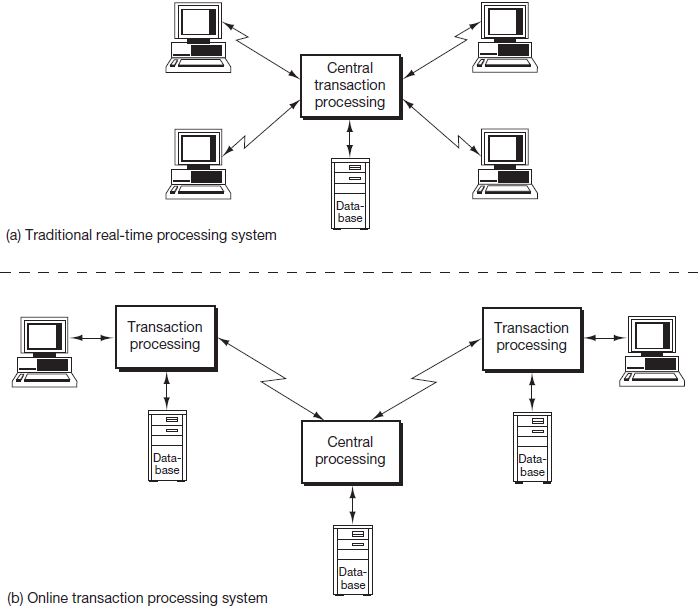In an effort to reduce both the expense and delay of communicating business event data over what are sometimes great distances to complete business event data processing in real time, many entities are turning to online transaction processing (OLTP) systems. An OLTP system is a real-time system that performs all or part of the processing activities at the user’s location. These systems use business event data processing machines that have the capability to manage data, run applications, and control communications with the central computer and data stores. By performing most of the processing at the user’s location, delays caused from electronic communications between the user and the central computer are reduced or eliminated (see Figure 4.4), as is the cost associated with communicating to the central location during the processing of the business event. Only the results need be communicated. Two common applications for these systems have been automatic teller machines (ATMs) and computerized reservation systems. Note in Figure 4.4 that the electronic communication network in an OLTP system becomes even more complex as processing occurs at the user’s end, but then data must be updated at all computers. For instance, in the case of an ATM, once an individual has withdrawn money from his or her account, the system needs to update the balance at all ATMs before additional withdrawals may be made.

Many banks have only recently converted to OLTP technology. Note that in an OLTP system, the immediate updating of balances at the central location and the user locations is done with shadow data (e.g., copies of the master data used for real-time processing) which are duplicated at each site, but for control purposes, the actual master data are usually updated once a day using batch processing.
While immediate mode-dominated systems are becoming the most prevalent method for new business event data processing applications, they are not necessarily the end-all solution for all applications. Both periodic mode and immediate mode approaches have distinctive characteristics that make each a preferable option for certain types of applications. If periodic processing were used for ATM processing, for example, a person might withdraw the entire balance from his or her account multiple times before the system processed the event data and updated the accounts—a significant losing proposition for a bank. Clearly, any given application should be matched with the best or most applicable processing method.
|
Review Question How does the use of online transaction processing (OLTP) improve the timeliness of online real-time processing? |
- 11940 reads






